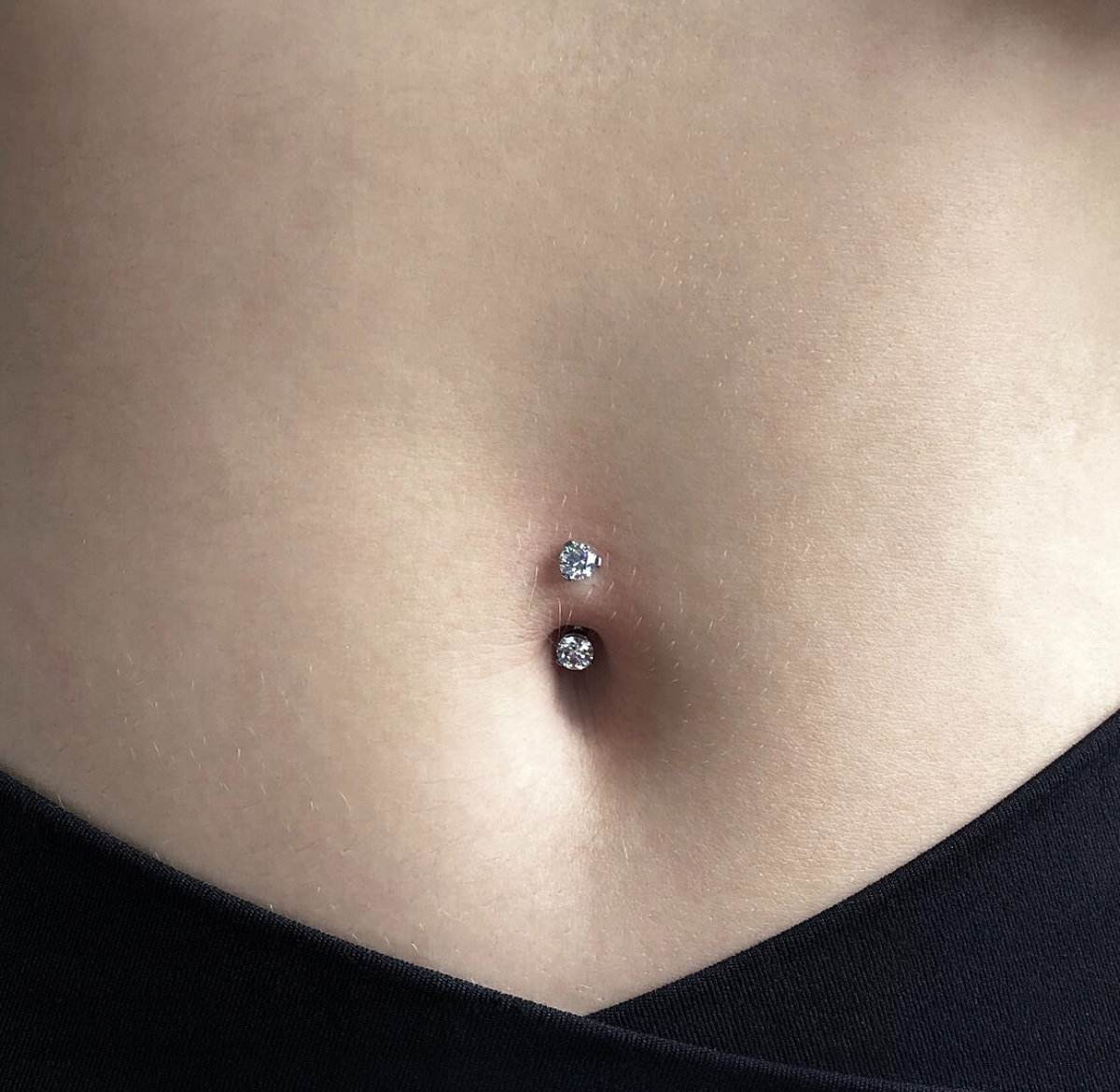
We collect basic website visitor information on this website and store it in cookies. We also utilize Google Analytics to track page view information to assist us in improving our website.

Hey Pi Fam. Today, we're diving into the world of navel anatomy and exploring two popular navel piercing styles: traditional navel piercings and floating navel piercings.
It's important to note that individual anatomy can vary greatly, and the suitability of a specific piercing style will differ from person to person. Our piercers will assess your navel anatomy during a consultation and guide you on the most suitable piercing style based on their expertise and knowledge.
Let’s get into it...
Traditional Navel Piercings
Traditional navel piercings are the most common and classic style. They involve a single puncture through the skin above the navel and below the upper rim, resulting in a vertical hole. This style typically uses a curved barbell as the jewelry. The barbell rests inside the hole, while the decorative ends sit on the top and bottom of the navel. Traditional navel piercings are well-suited for a variety of navel anatomies. However, the ideal anatomy for this style includes a distinct fold or crease above the navel, known as the upper rim. This fold allows for a secure placement of the jewelry and prevents migration or rejection. Additionally, the depth of your navel is an essential factor to consider. A moderately deep navel provides enough tissue for the piercing to be comfortably placed without risking excessive pressure on the jewelry.
Floating Navel Piercings
Floating navel piercings, also known as inverse navel piercings or top-down navel piercings, are a more contemporary twist on the traditional style. In this style, the piercing is placed at the top of the navel and passes through the upper rim, creating the illusion of a floating piece of jewelry on the top of the navel ridge. The jewelry typically consists of a curved barbell with a small disk for a base, instead of a large gem like a traditional navel, and a larger top. Eliminating the large bottom piece of the jewelry ensures that pressure won’t be applied to the piercing channel, making healing easier and more comfortable. This piercing style is typically suitable for those with a shallow or flat navel, where the upper rim is not as pronounced.
Conclusion
Remember, the ultimate goal is to achieve a safe and well-placed piercing that will heal successfully, and complements your body. Prioritize consultation and communication with your piercer to ensure the best possible outcome.